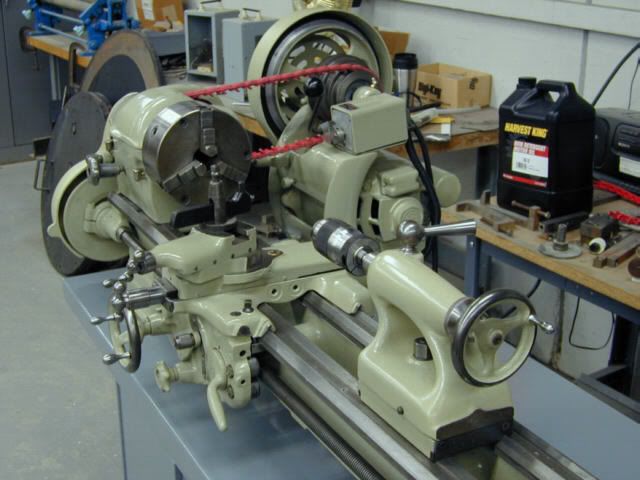Peter5322,
you misunderstood, or more probably in the interest of brevity I did not explain fully.
I got the HB metric transposition gearset several years ago. And continue to acquire gears for it (it=one of my TL's) here and there. IME, the hardinge metric stuff and spare gears are cheaper at auctions and on ebay than the SB stuff. Or perhaps they _were_. (as a hint, it cost less than 1/2 the price of Paul's very fairly priced kit for the SB, and came with a few more gears).
Always figured that by the time I got around to the project, there would be duplicates by then in the spares pile just from normal accumulation. Otherwise, it would provide an interesting project to make the Hardinge modified/stub 20DP cutters using a diaform, and then making the gears on a shaper.
In the meantime, Paul's metric set for the SB came up on Ebay a couple months ago, and I bought it as an additional accessory for my SB 10K. In a pinch, 18DP involute gearcutters are available off the shelf (unlike the hardinge pitch) reasonably priced. That is to say, if a metric thread becomes essential, and the set up needs approached as a job rather than a hobby, there is quick recourse to a reasonable solution, at least for me. (keep in mind, the way I used to single point metric stuff was with a set up in a mill-drill).
IOW, the 2 different transposition gearsets are for 2 different lathes, you need not worry!
Paula,
Thanks for the info on SB lathes. I never knew the 10K was made without a QC box (Thought all 10K's were A models) 'Course that should not be surprising....If you ever saw my post back when it "accidently" followed me home (might have been on the old Chaski or early PM), I thought it was a 9A when bought

I just see way more hardinge and cataract, which also has more appeal for me. SB stuff "in the wild" is a bit rarer around here.
smt



 . But at least both sets of 127T transposition gears are on my shelf for the 2 lathes when a supply of round-tuits comes in
. But at least both sets of 127T transposition gears are on my shelf for the 2 lathes when a supply of round-tuits comes in 
